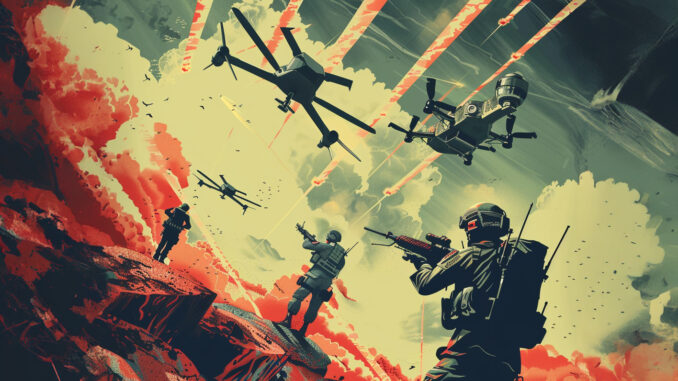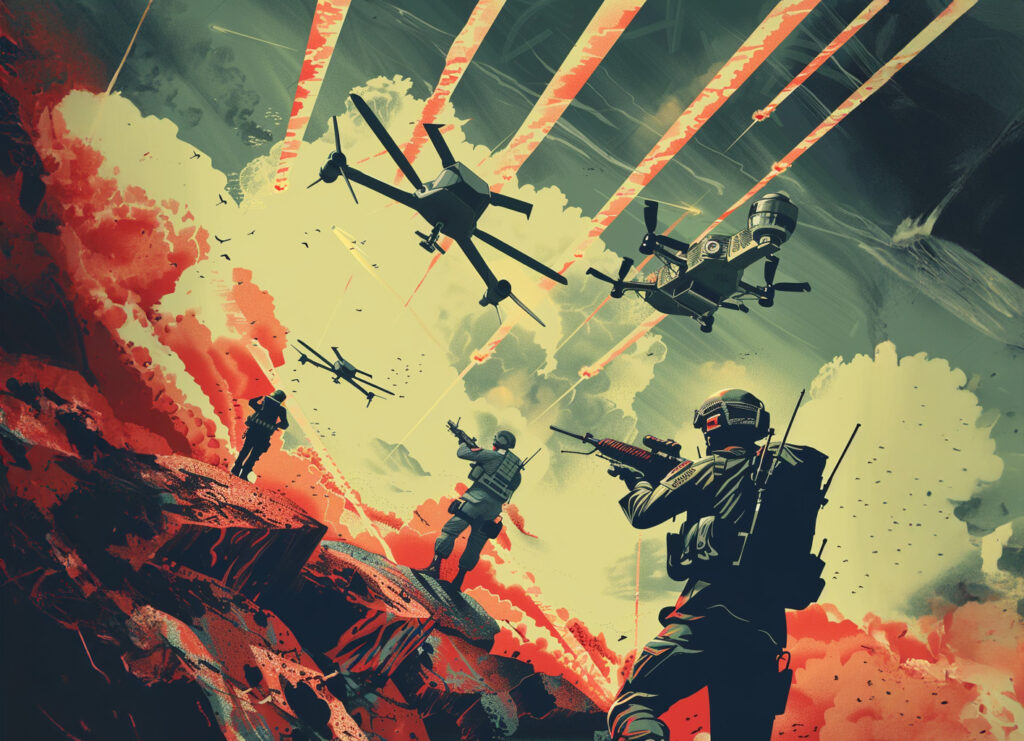
An analysis of military drones and anti-drone systems, the evolution of defence technologies and the implications for modern armies.
To summarise
Military drones, once dominant on the battlefield, are losing their edge with the rapid development of electronic countermeasures. General Pierre Schill, Chief of Staff of the French Army, highlighted this trend at Eurosatory. Although powerful today, drones will have to contend with increasingly sophisticated defence systems, reducing their impunity on the battlefield. This technological evolution requires appropriate procurement and development strategies to maintain operational effectiveness.
The current importance of military drones
Military drones play a crucial role on modern battlefields, particularly in Ukraine, where they account for around 80% of front-line destruction. UAVs such as the Switchblade 300 and the Bayraktar TB2 have demonstrated their effectiveness in providing precise reconnaissance and strike capabilities. For example, the Switchblade 300, weighing 2.5 kg, can be launched from a portable tube and has a range of 10 to 30 km, with an autonomy of 15 to 20 minutes. This drone is equipped with a small explosive charge similar to a 40mm grenade, making its strikes particularly destructive to light targets and unarmoured vehicles.
However, this effectiveness is limited by the vulnerability of drones to electronic countermeasures. In Ukraine, 75% of drones used are lost to electronic warfare, showing that their impunity on the battlefield is a transitory phase. Anti-drone systems, which are developing rapidly, are beginning to level the playing field.
Development of anti-drone systems
Anti-drone systems are diversifying and improving. At Eurosatory, numerous anti-drone devices were presented, including kinetic solutions such as guns, cannons and missiles, as well as ‘soft-kill’ solutions that neutralise drones by electronic means. Companies such as Safran, Thales and Hensoldt demonstrated technologies capable of disrupting drone communications and navigation systems.
For example, the vehicles in the French army’s Scorpion programme will all be equipped with anti-drone systems within the next two years. These vehicles, such as the Griffon and Jaguar, will have detection capabilities linked to turrets capable of firing 40mm airburst grenades or missiles, enhancing their ability to intercept and destroy enemy drones.
These systems are essential to counter the growing use of drones in modern conflicts. Drones can be used not only for direct strikes, but also for reconnaissance, surveillance and disruption of enemy systems. Advances in electronic warfare and automated defence systems will gradually reduce the effectiveness of non-stealthy, non-manoeuvring drones.

Implications for military strategy
The rapid evolution of drone and countermeasure technologies is forcing militaries to adapt their acquisition and development strategies. General Schill pointed out that long-term procurement programmes for technologies such as UAVs can become obsolete in a matter of months due to rapid advances. As a result, electronic procurement, including drones, radios and smartphones, could be carried out in batches to allow for more frequent technology upgrades.
For example, the French army’s Scorpion programme integrates extremely powerful information systems, with some vehicles having more lines of code than a Rafale fighter jet. This enables capabilities such as immediate detection of threats, including drones, thanks to on-board artificial intelligence. Vehicles such as the Griffon, Serval and Jaguar, which are currently being delivered, can be equipped with active or passive protection and incorporate collaborative combat systems enabling one vehicle to target a threat detected by another.
Economic and industrial consequences
The rapid pace of technological development in the field of military UAVs and countermeasures has major implications for the defence industry. It is crucial to develop an industrial model capable of mass-producing standardised technologies if necessary. The ability to renew equipment rapidly at brigade level, rather than through multi-year programmes, will enable armies to remain at the cutting edge of technology.
For example, the cost of selling kamikaze drones to Taiwan, including Switchblade 300s and ALTIUS 600Ms, is around €360.2 million. This figure includes logistical support, training and spare parts. A batch purchasing strategy would allow Taiwan to progressively integrate technological upgrades, ensuring that its capabilities remain effective against modern threats.
Future prospects and recommendations
The future of military UAVs and anti-UAV systems is marked by an intense technological race. Armies must remain flexible and adaptive, integrating new technologies rapidly to maintain an advantage on the battlefield. The development of more autonomous drones, capable of navigating terrain and changing frequencies to avoid jamming, will be crucial.
Investment in artificial intelligence and autonomous systems will play a key role in this development. For example, future drones could incorporate machine learning algorithms to improve their ability to avoid countermeasures and optimise their reconnaissance and attack missions.
The dominance of military drones on the battlefield is a temporary phenomenon. Rapid advances in electronic countermeasures and anti-drone systems will gradually redress the balance. Armies must therefore adopt flexible acquisition and development strategies to adapt to these rapid changes and maintain their operational effectiveness.
War Wings Daily is an independant magazine.